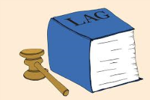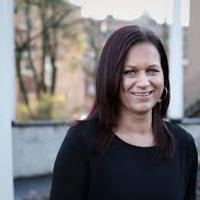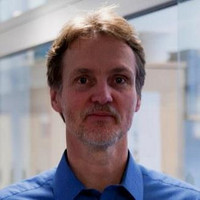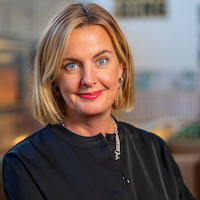 Author
Author

In autumn 2018, the School was reviewed with regard to regulatory compliance. It was revealed that the School requires a lot of improvement, and we were asked to submit an action plan to the President of KTH and University Board, which in turn adopts the School’s action plan.
The School of Industrial Engineering and Management’s administration has been process-orientated for many years. But when daily life creeps in, it can be easy to miss something. This may, for example, involve the quick implementation of a new resource, but even then there is legislation that must be followed.
We have begun work on producing videos connected to the administrative processes. These shall be made clearly visible on our internal website. The idea is that it should be quick and easy to get information on what needs to be done. The first video that was produced is called “Purchasing and Procurement”. This is one of the more complex processes. The second video that has been completed is “The Travel Process”, which covers elements to consider prior to a trip all the way up to the reimbursement of travel expenses.
https://play.kth.se/embed/secure/iframe/entryId/0_glj62uil
(If the English website is accessed, the videos will be available with English subtitles).
Films currently in production:
- Entertainment Expenses
- Secondary Occupation
The fact that the aforementioned processes of Purchasing and Procurement, Travel, Entertainment Expenses and Secondary Occupation were selected in stage one is due to the fact that it was within these processes that the School had the most issues in the internal audit.
We hope that the videos will contribute towards making it “Easy to do the right thing”, a quick reminder of what applies in terms of the laws, policies and ordinances that are applicable to employees within a government agency. The films are produced within the School of Industrial Engineering and Management, as we now have the resources to do so, thanks to the unit for digital learning becoming part of ITM, and a growing communication unit within business support.
Do you know of a process that you think we should make a film about? Send your suggestion to; Christina.carlsson@itm.kth.se.
Environmental work at KTH’s schools and Joint Business Support (GVS*)
One of the Principal’s areas of priority is Environment and Sustainability. This means, among other things, that today there is a great deal of focus on these issues at KTH. The environmental work at the schools/GVS is run centrally from 01/01/2019 at the KTH Sustainability Office, together with the schools’ management.
Here is the link to the school/GV’s own web pages regarding environmental work within their own activities:
https://intra.kth.se/styrning/miljo-hallbar-utveckling/miljoarbete-kth-skolor
Here the schools’ environmental organisations, environmental goals and local routines are described. Based on the overall Sustainability Goals, schools/GVS establish goals and action programs. Local routines are also developed within the areas that require more detailed guidance.
Report environmental deviations or suggestions for improvement

Have you seen anything that deviates from how KTH works with environmental issues, so-called deviations (deficiencies) in the environmental work?
Or do you have suggestions for improvement regarding KTH’s environmental work?
This can be usefully reported via case management (MER SPE), which can be found on the intranet under the services tab, or reported directly to service@itm.kth.se.
*GVS = Joint Business Support. Formerly the term was “UF”. The concept of GVS was introduced on 01/01/2019.
With greetings from the support team
Christina
 Author
Author
This week I have some new and exciting educational events to tell you about. At first I would like to emphasize that all ITMs teachers will have access to a digital coach for the first six months of 2019.
Jonas Thorén is a media pedagogue, coach and producer that will devote one day a week to help ITMs faculty to design and produce digital teaching material. Jonas can for instance help us with:
- Tutorials when recoding video lectures
- Tutorials when editing recorded material
- Powerpointdesign for e-learning
- ”Storytelling” and different media formats for e-learning
- Access to handbooks, guides and templates for e-learning
- And many more things
So, if you’re interested in getting some good ideas on how to digitalize your teaching please contact Jonas at jt3@kth.se
One of the things that Jonas already has helped ITM faculty with is producing three videos focused on gender and equality. The videos were recorded by Charlotte Holgersson, Anna Wahl and Alice Marshall together with Jonas. I’m one of the seminar leaders within the Prosam course and therefore I got to view these excellent videos and then had the pleasure to discuss them with the students (attending their first year in the I-program). Their insights, reflections and suggestions for strategies to create a more inclusive environment was amazing. So, if you want to both get some insights on a useful JML educational element, as well as a good example of what our digital coach can help us create, take a look at the videos by using the following links (but they are in Swedish):
https://play.kth.se/media/En+inkluderande+studiemiljo%CC%88-+Presentation+av+Charlotte+Holgersson/0_la5l7ni2
https://play.kth.se/media/Presentation+av+Anna+Wahl%2C+omJ%C3%A4mst%C3%A4lldhet+p%C3%A5+KTH/0_4njqd0uu
https://play.kth.se/media/J%C3%A4mst%C3%A4lldhet+p%C3%A5+KTH/0_qsl1r9r6
Finally I would like to promote that KTH is arranging the third SoTL conference in March 2019. The conference will take place at KTH, Campus Valhallavägen in Stockholm, 28-29 of March. If you want to know more about the conference please check out this website:
https://intra.kth.se/en/utbildning/utveckling-och-hogskolepedagogik/kth-sotl/conference-2019
 Author
Author
Collaboration with industry is one of the important factors for a successful technical university. This can take place in so many ways as I experienced yesterday when I visited Outokumpu Stainless in Avesta. I had three meetings planned: 1) a discussion about how we could use slag as a replacement for lime in a neutralization process, 2) a discussion with an industrial PhD student, and 3) a visit to the plant to spot study the AOD reactor. Note, during the plant visit I proudly wore my safety jacket with a KTH logo on for the first time! My colleague Anders Tilliander came up with the idea. It turned out to be a great idea since I got many positive comments and people knew where I came from.
The first example on collaboration involves one of our PhD students, Leo Carlsson, who was on the same morning train as me. His research topic is machine learning big data related to metallurgical industry. The last two years he has spent on trying to model the energy consumption in an electric arc furnace, which is an important reactor in the circular economy since it uses recycled metallic scrap as a raw material. Leo’s results are promising but in order to better understand the reliability of the huge amount of input variables he uses, he decided to sit together with the operators during a day to learn more about input variables that they use to control the process. Thus, the purpose is of course to make sure that the theoretical model he has developed will be of use in the production. This close contact with the industry is important when introducing new concepts in production. I am sure he will be back many times before finishing his PhD!
Another example of how we can collaborate with industry is also from yesterday and connected to the visit in Avesta. In arecent VINNOVA project, KTH was granted a project to study how if it is possible to use vibration measurements to indirectly determine how much gas that is injected in to liquid steel. This is a challenging task and it includes deep knowledge on processes, measurement techniques, signal treatment as well as how this information can be coupled to machine learning theories. The project is led by Nils Andersson and Björn Glaser. They spent yesterday in Avesta to spot suitable places to mount the vibration measurement devices and are doing the same thing today at Uddeholm in Hagfors. The project is a collaboration with machine learning experts at Luleå university and measurement experts at SWERIM as well as a collaboration with a handful of Swedish steel companies. This is a typical example on how universities, an institute and several industrial partners can collaborate in studying industrial relevant projects.
A third example of how we can collaborate with industry is related to the PhD education. In one PhD course at the materials science and engineering department the focus is on production technology and how it is necessary to combine economical aspects to technical aspects in the working life to come up with sustainable and profitable solutions. The two PhD students Carrie Jonsson and Amanda Vickerfält also visited Outokumpu yesterday to study the electric arc furnace process in order to better understand the practical aspects before completing their project report.
My last example of how important it is with collaboration between KTH and industry is from having lunch at the company. I was amazed over how many people I greeted, which had been educated by KTH. They are our alumni and I can feel the connection by their comments:
- Hi professor are you here to get some experienceof the “real” metallurgy?
- Pär, do you have any good students we can hire?
- Great to see so many KTH students in the plant today!
- How many new students applied to materials design this year?
My reflections over the day when I was on the train back home were that this extremely good and frequent collaboration KTH, and especially ITM, has with the industry and society is ot the outmost importance. People talk about life-long learning but I would like to extend it to a life-long collaboration with us at ITM (KTH) and the industry!
Pär Jönsson, Vice Dean
 Author
Author
Do you want to date a robot?
Now what, has the dean gone crazy? No, actually not, it’s a teaser for Södertälje Science Week 30/1 -2/2. Apart from robot dating you can listen to interesting talks including also some prominent faculty members of ITM as speakers. Besides, I like robots.
We have closed the books for the financial year 2018 with a positive result of 26,1 MSEK (6 from education and 20 from research and research education). The total income amounts 773 MSEK which means a substantial increase since the previous year, the main reason being the integration of Department of Learning in Engineering Sciences. The positive result also means that the capital brought forward from 2018 is on the positive side again which is very good when it comes to discussions with the KTH management about new initiatives. The positive financial result on the research and research education side is to a large extent planned, and this plan is connected closely to the four thematic and interdepartmental areas mentioned in my last blog in December and to the fact a fair amount of resources was allocated to ITM during 2018 for strengthening research and competence build-up in gender and equality at KTH.
Last week we had – according to the ITM tradition – a two-day Leaders’ Conference targeting a larger part of ITM colleagues with leader roles. All leaders cannot be invited every year because it would be too many. We were some 40+ colleagues gathered at Såstaholm in Täby and this year the invitees were all unit leaders, support function managers, the ITM management team, the persons responsible for our doctoral program and finally our Grundutbildningsutskott. The three main topics discussed were:
- How to prioritize and start implementing some of the many ambitious activities and objectives outlined in our development plan?
- How to reach a more effective interplay between academic activities and support functions? Group works led by support function managers (Service centre, HR, Economy, Education support, Communication, EU project support) resulted in both concrete development ideas and fruitful discussions.
- How should we increase the scientific impact (publication, citation) of our research activities? This is a prioritized topic at KTH and all schools are required to deliver plans and activities that lead to stronger impact, not the least for contributing to the ranking of KTH in a global context.
All these topics will now be taken forward within the School through our normal organisational structures but also through dedicated working groups and initiative leaders.
This was all for now!
/Jan
https://www.kth.se/aktuellt/nyheter/hallbar-framtid-ar-temat-for-sodertalje-science-week-1.870636
 Author
Author
In a recent guest editorial article in SvD about the climate threat and the impact of its counter-measures on our economy it is argued that we are facing huge costs (in the range of thousands of billions of dollars) while still not even coming close to the 1.5 degree target. This is not surprising given the fact that 81,4% (2015, source www.iea.org) of the global energy production is based on fossil fuels. Adding to this that the positive trend of electrification still suffers from the fact the 66% (2015, source www.iea.org) of the global electricity supply comes from fossil fuels. The climate change is obviously a threat but we must view it as a challenge for education, research, innovation and entrepreneurship. Even though the huge cost estimates above are very imprecise they also imply a huge need and room for innovation and entrepreneurship. And for sure digitalization will – if wisely utilized – be an important tool in this necessary societal transformation towards sustainability.
Education and research at ITM is broad and of course not all activities are directly related to sustainability but if you start to categorize what is actually being done it will become clear that a lot of what we do has elements of and relations to the different sustainability goals. This is a good basis for realizing the ambitious plans manifested in the ITM Development Plan 2018-2023 (intra.kth.se/itm/dokument/handlingsplaner). As usual, the School has during the fall proposed new initiatives and “negotiated” with KTH management about these initiatives. For KTH as whole based on discussions with and between all five Schools, the result is documented in the “Verksamhetsplan för KTH 2019”. More specifically for ITM, the School has identified four thematic and interdepartmental areas where a larger part of the negotiated resources will be spent. These are:
- Industrial transformation through digitalisation, renewable energy and circular economy
- Integrated mechanics, components and materials design including additive manufacturing
- Sustainable energy systems: Technical and business perspectives
- Innovation eco-systems, innovation management and entrepreneurship
During an ITM management meeting in December it was decided how these areas will be operated and led. Early 2019 more information will come.
Finally I conclude that education and research is always, and for obvious reasons, communicated as our core activities. However, without professional administrative support we would not be able to deliver according to what society expects. I wish everyone Happy Holidays, but this year with a little extra emphasis to all of you who are providing support to our teaching and research staff/students.
Let´s meet in January 2019 with new energy and fresh ideas!
/Jan



